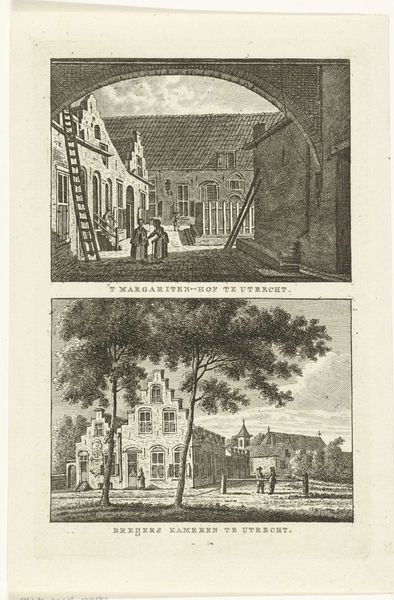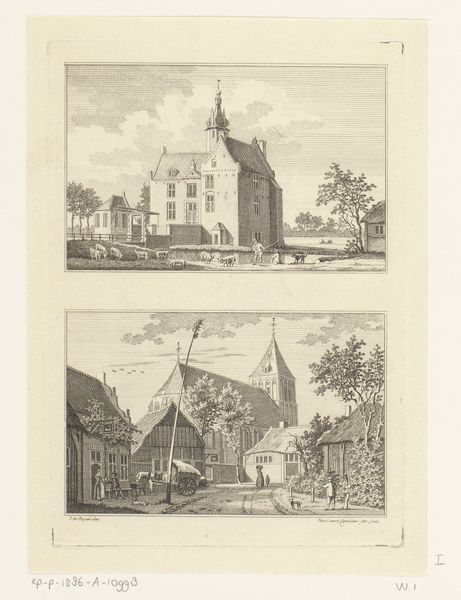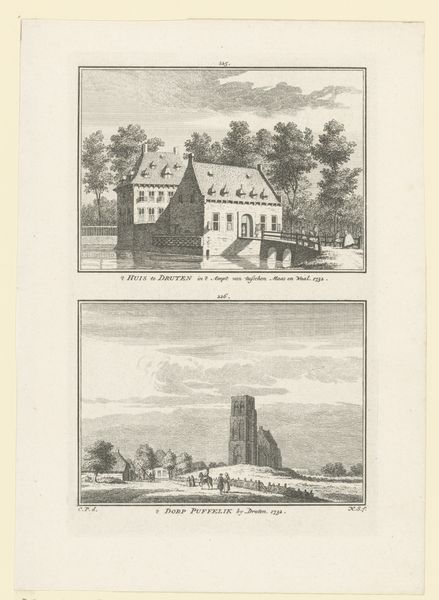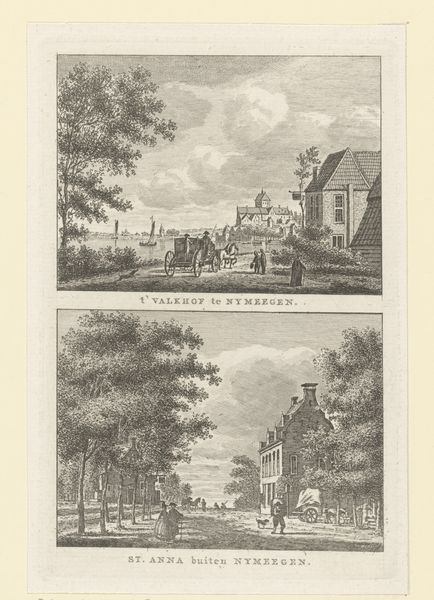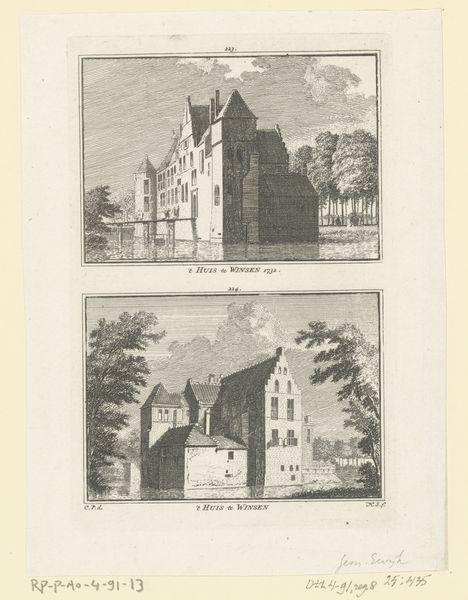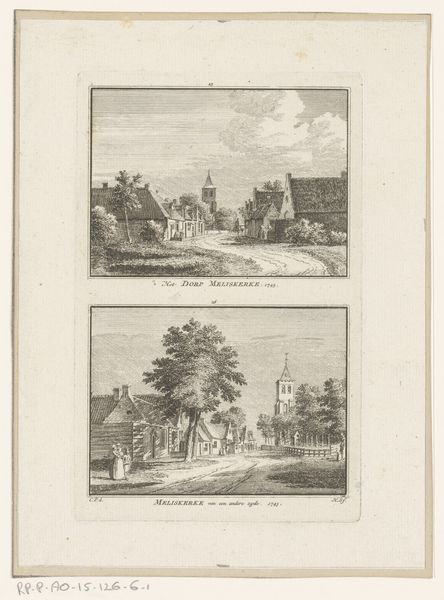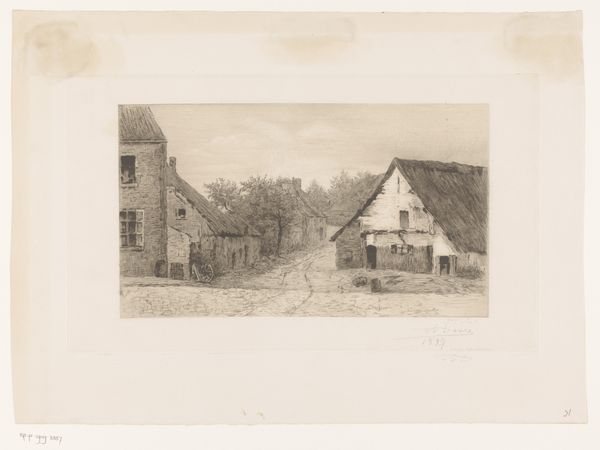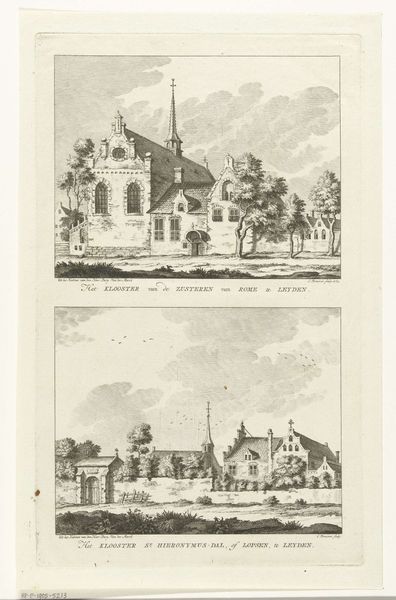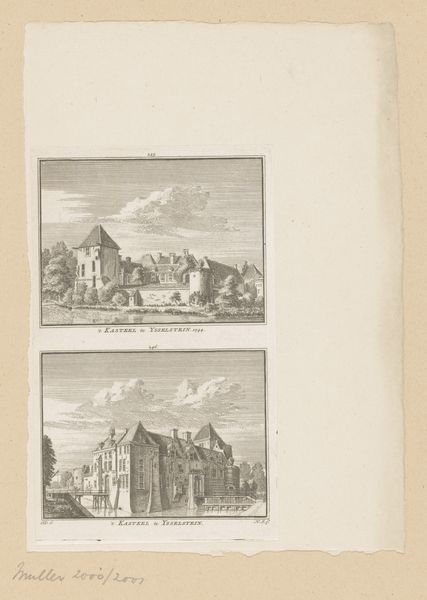
Dimensions: height 167 mm, width 112 mm
Copyright: Rijks Museum: Open Domain
Curator: This engraving offers us “Twee gezichten op het Kasteel van Oijen,” or Two Views of Oijen Castle, dating from between 1750 and 1792, created by Hendrik Spilman. What strikes you initially about these twin architectural portraits? Editor: They’re incredibly precise, almost sterile. The detail suggests a fascination with documentation, but the pale palette drains any immediate emotional response. Curator: The artist likely utilized etching and engraving techniques for this print. We should note the importance of printmaking as a crucial means of disseminating information and shaping perceptions in the 18th century. How do you think the artist’s choices shaped these perceptions? Editor: I think it invites reflection on social hierarchy. Look at the castle’s isolation, surrounded by water, removed from the common gaze. Printmaking, yes, it disseminates information, but what information, and who controls that narrative? Whose story of this place are we consuming, especially given that land ownership in this time meant very real power over the peasantry and other workers? Curator: Considering the time period, there were likely guilds regulating the production and sale of these prints. Spilman may have been constrained by these systems, dictating everything from material quality to pricing. Editor: Right. And think about accessibility: the market, the patrons, the audience of these prints. Whose gazes was the artist hoping to capture with the careful rendering of each brick and window? How does that relate to the building's use, the historical moment? The way the landscape sits outside any immediate social and political disruptions— it asks us to perhaps question that idealised view of a building, or of architecture. Curator: Yes, perhaps we’re not just seeing a castle, but encountering a relic of a social order, packaged and distributed through careful material processes. It offers us a glimpse into both the architectural landscape and the systems that sustained it. Editor: I think reflecting on these works challenges us to think critically about what persists, how it does so, and at whose expense.
Comments
No comments
Be the first to comment and join the conversation on the ultimate creative platform.



